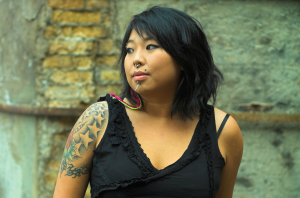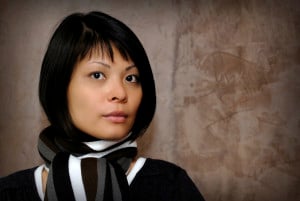When it comes to women of East Asian heritage, there are stereotypes aplenty to choose from. There’s the “cunning Dragon Lady,” the “severely strict Tiger Mom,” and the “model minority math whiz.” But in this episode, I want to focus on one of the most persistent and highly fetishized of these stereotypes that women – especially young and single – still encounter today: the submissive China doll or Japanese geisha. The so-called “yellow fever’s object of affection.” Emphasis on object.
Officially, East Asia comprises eight distinct nations with a population of more than 1.5 billion. So it’s no wonder then that we assume that any woman with any connection to that region whatsoever – even if she was, say, born and raised in the United States – must meet the criteria of being a submissive China doll, right?
Being diminutive, coy, and sexually permissive at the end of the day? No?
The overarching theme to this stereotype is ascribing ultra-femininity to prop up masculinity. While the submissive Asian girl is a vast oversimplification, of course, it represents a highly complex geopolitical history spanning almost 200 years.
So how did it originate?
First up: Orientalism. Ever since Marco Polo’s 13th century jaunt to China, the West has lusted after what the East has to offer. But of course European and British forces didn’t want to just go over and make friends!
They wanted the power; they wanted the riches; they wanted the glory!
They wanted the women.
This gave rise to what culture critic and theorist Edward Said referred to as Orientalisim, or the persistent exoticizing and feminization of images of the East in order to, by contrast, masculinize and project the power of the West.
This related exoticizing of the local women became a major export in the wake of the mid-19th century Opium Wars which opened up trade access to China. Around the same time relations between Japan, Britain, and other European nations began to defrost.
Which leads up to stereotype clue number two: Not a fan, but a book.
In the late 1800s, French naval officer and part time novelist Pierre Loti loved writing about all of his travels in the Middle East and South Asian seas and eventually his trip to Japan. That was the site of his 1888 breakthrough hit Madame Chrysanthéme – pardon my poor French pronunciation.
The book is a fictional diary account of a French naval officer’s sojourn to Nagasaki, where he takes up a so-called “temporary wife” called Chrysanthéme. And he marvels over her diminutive doll-like sex appeal and how all of her girlfriends in Nagasaki are super-feminine and submissive and sexy, too.
The book is a sensation. It’s reprinted over 200 times and scholars today consider it the seminal text for cementing our Westernized idea that East Asian women are all so diminutive and super-feminine, docile, and essentially ripe for sexual exploitation.
But Chrysanthéme’s legacy doesn’t stop there. It would ultimately inspire Puccini’s famous opera Madama Butterfly, which is the most performed opera in the United States. And it’s all about this naval officer named Pinkerton and his temporary wife named Cio Cio-san.
And if those two names ring a bell, that probably means you’re a Weezer fan.
“Listening to Cio Cio-san. Fall in love all over again.”
So far, our ingredients are a healthy dose of imperialism, a massively popular book that we don’t really know about anymore, and an opera that a lot of people went to see. Is that it?
Oh no! We’ve got a few more wars to talk about. World War II and the Korean and Vietnam Wars fully revived this geopolitical image of the hyper-masculinized West led by Uncle Sam going to invade the feminized and by virtue weaker and cunning East.
Quite literally, relationships – consensual and not – were being formed between GIs and local women. But unlike during the Opium Wars era, this submissive Asian stereotype was more of an import than an export, with GIs encountering local women-many of whom were part of military-centric sex trades.
Pop culturally during this time, Madam Chrysanthéme busts out of her cocoon yet again with very familiar themes popping up on stage and screen. Only this time with the white guy playing a little bit more patriotic hero in productions like South Pacific, The World of Suzie Wong, and Miss Saigon.
And spoiler alert: One thing Chrysanthéme, Madama Butterfly, and Miss Saigon have in common is that when the romance when the white dude fails, they kill themselves.
One bit of good news is that recently Hollywood has done a noticeably better job of portraying Asian women in less stereotypical and more nuanced roles.
And while that’s certainly cause to celebrate we have to remember that actually dismantling the stereotype – which I have a feeling a lot of viewers have encountered one way or another – involves dismantling an almost 200-year-old assembly line that has consistently collapsed this diverse group of women into these porcelain silent figurines that are meant to be ogled rather than truly known.




















